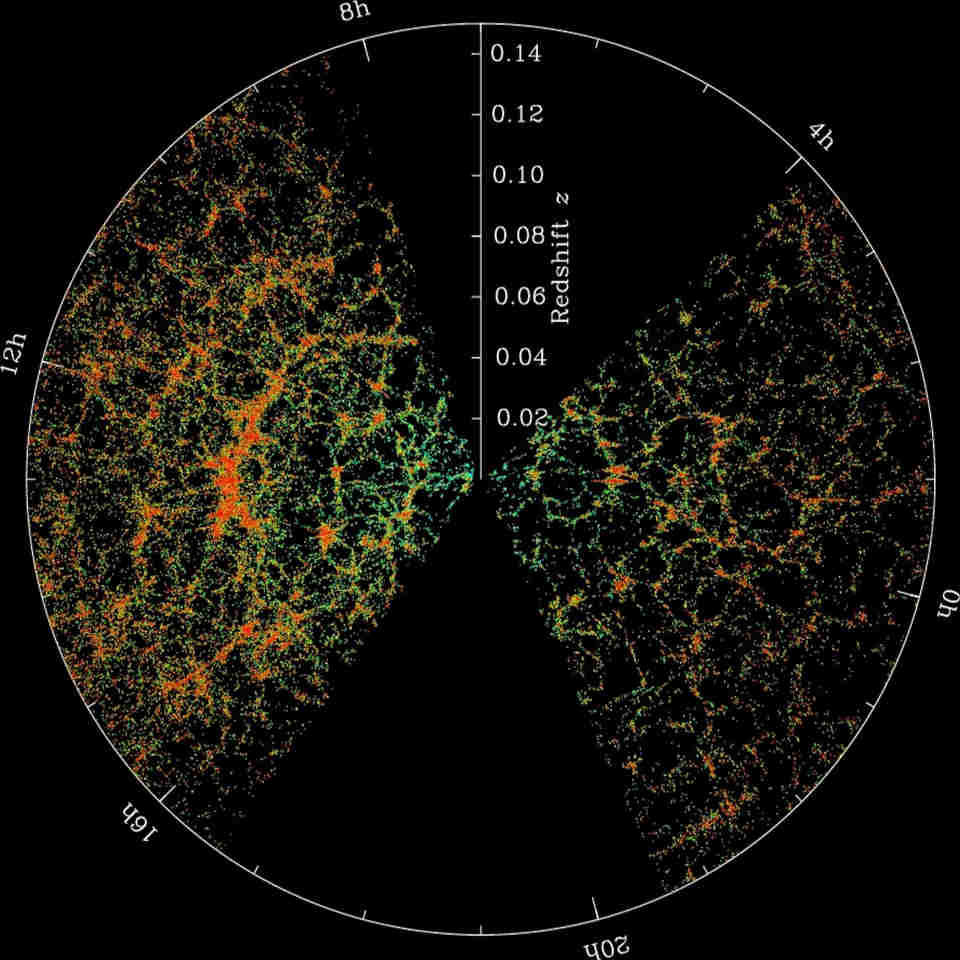Sloan Digital Sky Survey / (2/5)
◄ ►To improve the visualization of the filamentary structure, an area of about 10 degrees is presented in this map. This means that only a thin slice of the SDSS data is shown here in contrast to the previous map where a random set of 500000 galaxies and quasars, distributed over the entire survey, was selected.

The observations of the galaxies are more extensive and more precise when the objects are closer to the earth. Up to a redshift value of z = 1.5, which equals to a depth of around 2 billion light years, the cosmic structures are clearly visible.
One of the most spectacular structures in the Northern Galactic Hemisphere is the Sloan Great Wall, located approximately one billion light years away from earth. The structure was discovered in 2003 by J. Richard Gott and colleagues at Princeton University, New Jersey, United States. The Analysis of the Great Wall revealed a huge string of galaxies of about 1.37 billion light years in length, which is approximately 1/60 of the diameter of the observable universe. The bright orange region in the image above shows the position of the wall which can also be explored in the animation.
Galaxies: 2963274
Quasars: 1102641
Sky Coverage: 14555 deg2
Median Redshift: 0.73391
equates to ~ 10 billion LYs
Survey: 1998-2019
Published: 09.12.2019
Credit: SDSS